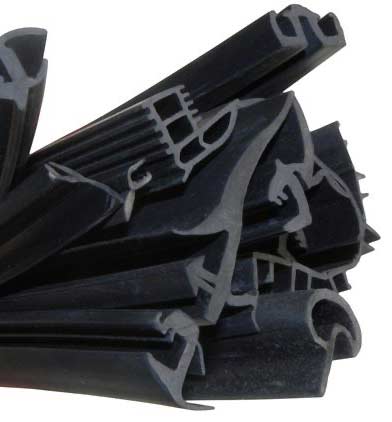Bulb Seal Design
A bulb seal is any type of seal that utilizes a bulb portion to seal a door or compartment. There are two main components of the bulb seal and both must be considered in order to work properly with your specific application. First how will the bulb seal be fastened to the application? The seal could slide into a channel, be affixed with an adhesive like tape, clip onto a flange with an edge trim or carrier section or have some other type of mechanical fastener like staples or screws. Second, what size and hardness of bulb is required for a tight seal?

The bulb needs to be made out the right material and be the correct size for optimal sealing performance. The material should be a soft sponge rubber (EPDM) material in order to ensure that it can conform to the proper size when the door or compartment is closed. The amount of compression that is needed to achieve the perfect seal is typically 25% to 50% of the original bulb size. If the compression is much more than 50% then you risk over compressing the bulb and creating a situation called compression set. Compression set is the negative result of having a rubber bulb not return to its original size after being compressed over a period of time. This can reduce the life of the bulb and compromise the seal creating leakage and warranty issues for your product.
In some applications a harder, dense EPDM can be used for the bulb portion of the seal. The applications where this type of bulb is ideal is in industrial settings where the door or compartment will be closed with a mechanical device such as being bolted or clamped on. The increased closing force required in the use of a dense bulb may be acceptable because of the increased performance the dense bulb will offer.
Uni-Grip offers virtually every bulb seal configuration and design you can imagine. We have dual durometer bulb seals, glued-on bulb seals, taped-on bulb seals, trim seals, bulb seals with spring steel clips, and a lot more all produced with the highest quality.
